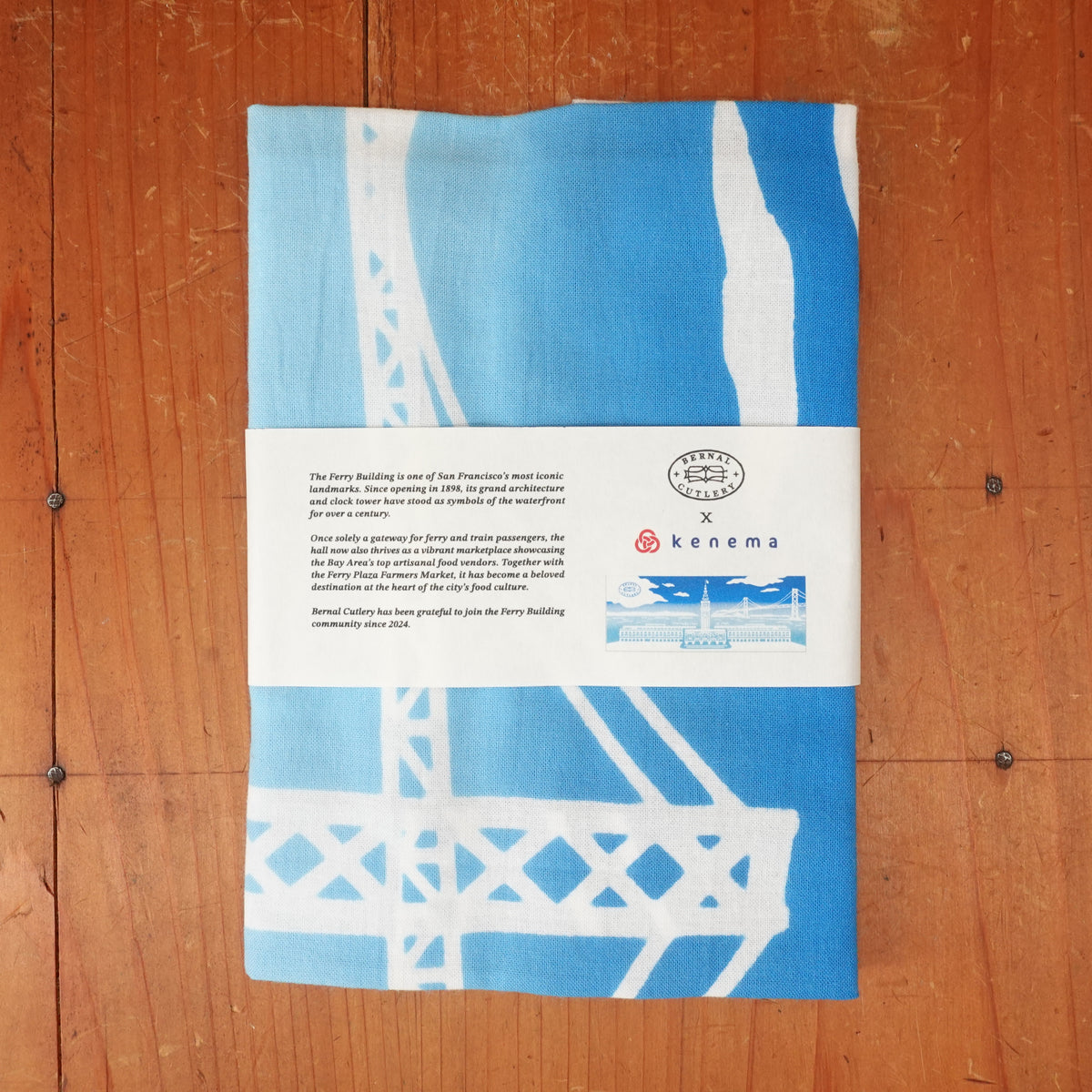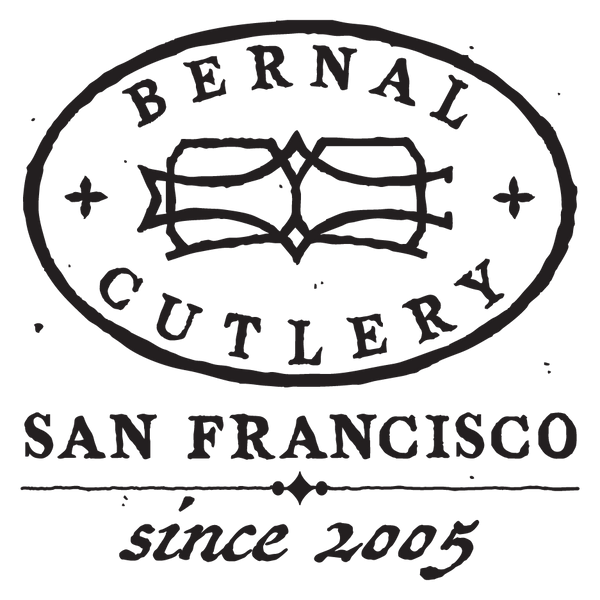-
Kitchen Knives
-
Bernal Cutlery House & Collaborations
- Greenfield Series
- Bernal Cutlery Black Label
- INVICTUS - K Sabatier | Butcher's Guide
- Nouvel Ideal - K Sabatier
- GS+ Ko Sabaki - Konosuke
- Small Chef - Rolin Knives
- Stainless Clad - Tosa Tadayoshi
- Knife Rolls - ILE
- Pizza Cutter - F+W | Prince
- Sakai Style - Blenheim Forge
- Sori Series - Sakai Kikumori
- Kurouchi - Nakagawa | Sakai Kikumori
- Shop by Use
- Shop by Shape
- Shop by Category
-
Shop by Maker
- Ashi Hamono
- Astral Works
- Au Nain
- Au Sabot
- AZ Knives
- Bernal Cutlery Manufactory
- Blenheim Forge
- Chazeau Honore
- Eichenlaub
- Florentine Kitchen Knives
- Friedr. Herder
- Gihei Knives
- Goyon-Chazaeu
- HADO
- Hatsukokoro
- Hitohira
- J Adams
- John Nowill & Sons
- K Sabatier
- Kaji Bei
- Kanehide
- Kenji Togashi
- Kogetsu
- Konosuke
- MAC Knife
- Masakane
- Morihei
- Mutsumi Hinoura
- Myojin Naohito
- Néron
- Naozumi
- Nigara Hamono
- Pallares
- Roland Lannier
- Rolin Knives
- Sakai Kikumori
- Satoshi Nakagawa
- Seki Kanetsugu
- Tagai Sanjo
- Tanabe Tatara
- Tosa Tadayoshi
- Tosa Tsukasa
- Tsukasa Hinoura
- Wakui
- Yoshikane
- Knife Storage
- Sayas & Guards
- Knife Care
- Trade In
- Bargain Bin
-
Bernal Cutlery House & Collaborations
- Knives & Tools
- Sharpening
-
Kitchen Tools
-
Shop by Brand
- Ambrogio Sanelli
- Andre Verdier
- Ateco
- Au Nain
- Chefs Press
- Due Buoi
- Dexter Russell
- F. Dick
- Geo Yukio Hattori
- Gestura
- Hardmill
- Hitohira
- Inside Line Equipment (ILE)
- Jones Cutting Boards
- Kagetsu Donabe
- KYOTOH Donabe
- Kuramoto
- Lancaster
- Lundy Way
- MAC Knife
- Made In
- Netherton Foundry
- Noda Horo
- Nordic Ware
- Pallares
- Peugeot
- Prince
- Silky
- SILPAT
- Shop by Use
- Cookware by Material
- Cookware by Type
- Prep Tools
- Cutting Boards
- Utensils
- House & Kitchen Scissors
- Softgoods
- Chef's Press
- Cleaning Supplies
-
Shop by Brand
- Tableware
- Vintage
- Pantry
- Books & Gifts
- Services & Info
or

Ferry Building Chusen Tenugui
-
Regular Price
-
€12,16
-
Sale Price
-
€12,16
-
Regular Price
-
Sale
Sold Out
-
Unit Price
- /per
- Regular Price
- €12,16
- Sale Price
- €12,16
- Regular Price
- Unit Price
- /per
Our exclusive Ferry Building hand-dyed tenugui designed for Bernal Cutlery.
Please note: While the lettering "Port of San Francisco" may appear flipped, the actual building from that angle with the Bay Bridge in the background has the letters running in that direction. The designers felt it was important to stay authentic to the building rather than change the design for the tenugui.
The Ferry Building is one of San Francisco’s most iconic landmarks. Since opening in 1898, its grand architecture and clock tower have stood as symbols of the waterfront for over a century.
Once solely a gateway for ferry and train passengers, the hall now also thrives as a vibrant marketplace showcasing the Bay Area’s top artisanal food vendors. Together with the Ferry Plaza Farmers Market, it has become a beloved destination at the heart of the city’s food culture.
Bernal Cutlery has been grateful to join the Ferry Building community since 2024.
We work with a tenugui company that uses a traditional stencil hand-dyeing technique called Chusen--in this method, dyes are poured onto the layered fabric, which has been protected with a special glue so that only the stenciled areas are dyed to imprint the intended patterns. The finished fabric is dyed in the same pattern on both sides, featuring a soft texture and distinctive colors.
Tenugui are traditional Japanese thin cotton towels that have been used since 300 AD-- basically since forever. They dry quickly, come in an incredible array of designs, and are highly versatile. They were used by samurai to absorb sweat underneath their heavy kabutos (head armor) or to wrap their sharp katanas. They quickly then spread to become fashion pieces, from head wraps to Kabuki actors and sumo wrestlers making their original designs to hand out in lieu of business cards. In modern times people use them as eco-conscious gift wrap or even tissue box coverings.
Care instructions:
With each use the cloth becomes softer and improves its water absorbency. The ends of the tenugui are not sewn, which makes it harder for germs to collect at the ends, and dries faster. You will notice that the ends will become frayed as you use them, but this is to be expected and adds "aji" or flavor. Simply cut the frayed strings, and you will notice that after a few washings it will stop fraying. As they are hand-dyed, the first several times you wash it they may bleed color. Therefore the first few times you wash it, wash without any detergent and hand wash in luke warm water. Gently squeeze out the water and dry in shade.
35x90cm
Cotton
Product of Japan.
About Bernal Cutlery
We are a full-service cutlery shop offering sharpening services, Japanese and Western culinary knives, vintage knives, outdoor, pocket and craft knives, cooking tools and accessories. We also offer knife skills and sharpening classes, and more.
We are proud to serve kitchen professionals, knife enthusiasts and home cooks alike. Located in the Mission District of San Francisco, California.
766 Valencia Street, SF, CA 94110
1 Ferry Building, Ste. 26, SF, CA 94110
